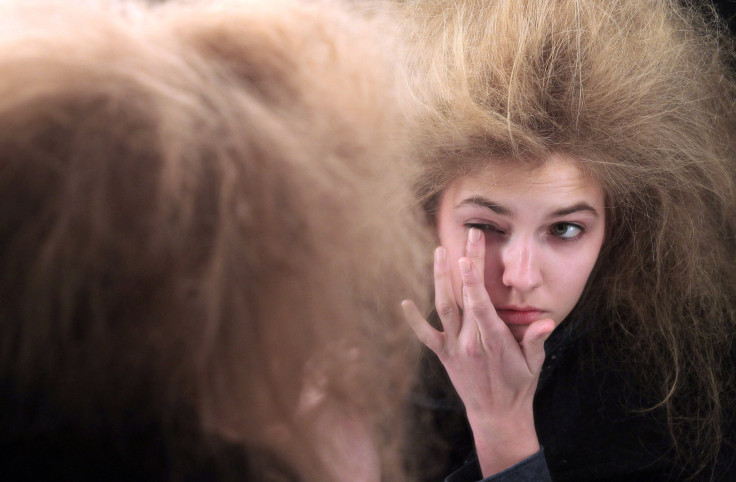What Is Uncombable Hair Syndrome? 18-Month-Old Has Rare Condition

Eighteen-month-old Taylor McGowan has been inflicted by a rare condition called Uncombable Hair Syndrome that was previously diagnosed in only 100 people worldwide till date.
The syndrome, usually characterized by disorderly silvery-blond or straw-colored hair, was a result of inheriting two copies of a gene mutation — one from each parent — that changes the hair shaft of the scalp. Little tufts of blonde hair started growing on Taylor's head when she was five months old and these seemingly untameable clumps continued to grow outwards as time went on.
“It was a little unique, it was fuzzy, and we expected that it would eventually fall out,” her mother, Cara McGowan said, reported Buzzfeed News.
After coming across pictures of other individuals on the internet with the same kind of hair, Taylor’s mother and father, Tom, realized their daughter had the syndrome, which was medically known as “Pili trianguli et canaliculi.”
“We essentially laughed it off. We thought there is no way that our child could possibly have this ultra, ultra-rare condition that only affects 100 people worldwide,” Cara said.
the real baby einstein! https://t.co/jAmJH10XFK via @ttamkins
— Caroline Kee (@CarolineDKee) June 11, 2018
Her parents, who live outside Chicago, sought the expertise of Professor Regina Betz — a leading figure in the syndrome’s research — who discovered both of them carried the mutation of the PADI3 gene which they passed onto Taylor.
“Most uncombable hair syndrome individuals have mutations in PADI3,” Betz said. “They are strongly expressed in the hair follicle and have their function in building the hair shaft.”
They used several products to flatten her hair but later decided to let the hair grow naturally.
“In total we have tried all kinds of products, maybe 15 different things,” Cara said, the Independent reported.
“We do try very hard to avoid introducing chemicals, as tempting as it may be, to try to tame her mane,” she said, Buzzfeed news reported. “She doesn’t really enjoy bows or having her hair braided so we have chosen to allow it to be wild and free.”
"Her hair looks amazing, like she’s a mini Albert Einstein," she said revealing they even dressed her up as Albert Einstein for Halloween in order to encourage her to like her unique hair. However, Cara said it was hard to style her daughter's hair: “It can be placed in a pony tail that will often stick straight up through the top of her head.”
Cara also revealed while many compliment her daughter’s hair, some make unkind remarks.
“Many people will ask if our daughter has stuck her fingers in a light socket or if we have done something with her hair,” she said, to which she answers she was born that way.
“I absolutely love Taylor’s hair. I personally think it is gorgeous and it matches her personality because she’s outgoing and free,” Cara said, adding she wants to spread the positive message that it is ok to be different and unique. “Our message that we would like to spread is one of accepting diversity, loving oneself, and recognizing bullying and what it looks like and making it stop.”
The couple also created a Facebook page named “BabyEinstein2.0” to spread awareness among people about the condition.
© Copyright IBTimes 2025. All rights reserved.





















